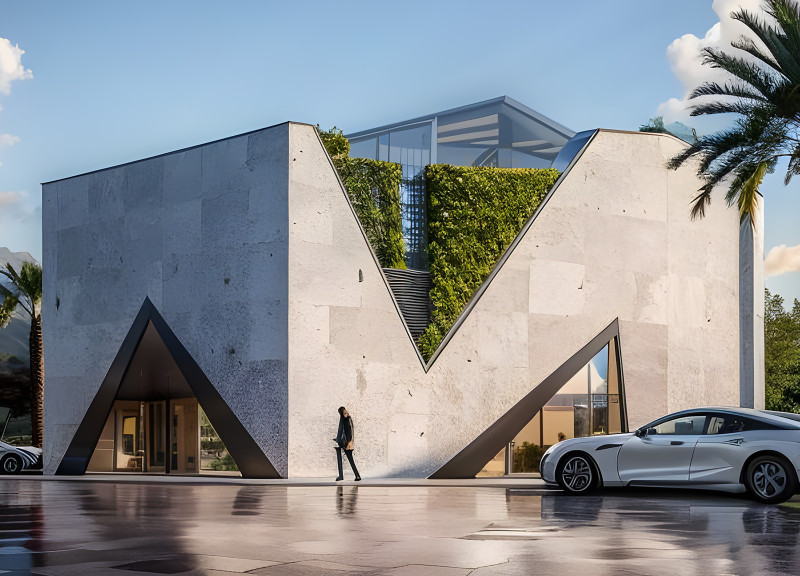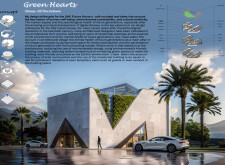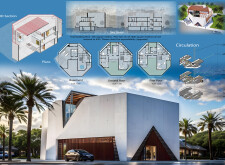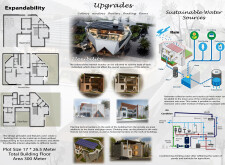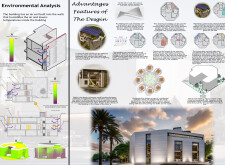5 key facts about this project
### Overview
The House of the Future is situated in the United Arab Emirates and embodies a holistic approach to modern residential architecture. This design emphasizes human well-being, environmental sustainability, and cultural sensitivity, aiming to establish a prototype for future housing developments. The structure integrates various elements that support psychological health, community interaction, and respect for traditional values, particularly those relevant to privacy and family dynamics in Arab culture.
### Spatial Strategy and Flexibility
The layout of the house spans approximately 305 square meters, arranged on a 600 square meter plot. Its angular forms create a dynamic relationship between the interior spaces and the exterior environment. The design features a basement for utility purposes, a ground floor dedicated to communal areas such as the living room, kitchen, and dining space, and a first floor that houses private areas including bedrooms and a study. The circulation pattern facilitates movement among family members and guests, utilizing open staircases and corridors to enhance accessibility. Importantly, the design allows for user-driven modifications, accommodating varying family structures and occupancy types over time.
### Materiality and Environmental Considerations
The architectural integrity of the house is reinforced through a thoughtful selection of materials. Concrete serves as the primary structural component, providing durability and strength. Large glass windows enable natural light and visual connections with the outdoor landscape, while natural stones like limestone and clay enhance the aesthetic appeal while contributing to thermal regulation. Wood elements in decorative finishes add warmth and visual interest. Sustainable features include integrated solar panels for energy generation, a rainwater harvesting system for irrigation and domestic use, and vertical gardens that improve air quality and foster biodiversity. An innovative air coil system embedded within the walls enhances indoor air quality and regulates temperature through humidity control.


